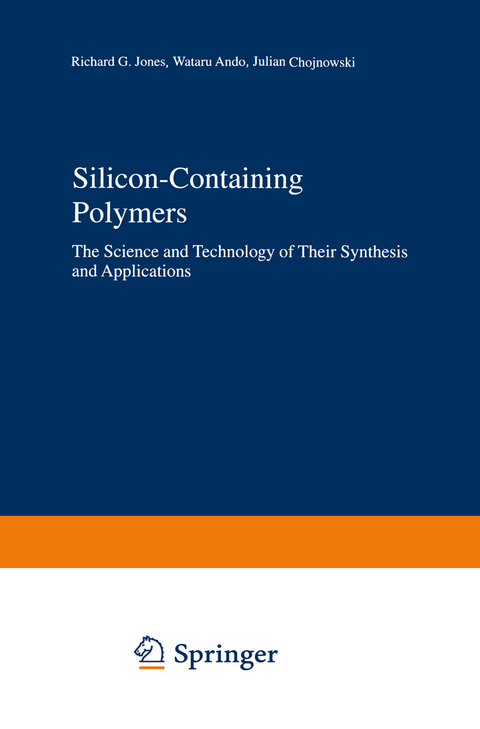
Silicon-Containing Polymers
Chapman and Hall (Verlag)
978-0-412-83110-2 (ISBN)
Section 1: Polysiloxanes.- 1. — Synthesis of Linear Polysiloxanes.- 2. — Organosiloxane Block and Graft Copolymers.- 3. — Side Group Modified Polysiloxanes.- 4. — Silicone Copolymer Networks and Interpenetrating Polymer Networks.- 5. — Preparation and Properties of Silicone Elastomers.- 6. — Polysilsesquioxanes.- 7. — Thermal Properties of Polysiloxanes.- 8. — Surface Properties and Applications.- 9. — Polysiloxanes: Direction of Applications and Perspectives.- Section 2: Polycarbosilanes and Polysilazanes.- 10. — Polycarbosilanes.- 11. — Polysilazanes.- Section 3: Polysilanes and Related Polymers.- 12. — Synthesis of Polysilanes by the Wurtz Reductive-Coupling Reaction.- 13. — Synthesis of Polysilanes by New Procedures: Part 1 Ring-Opening Polymerisations and the Polymerisation of Masked Disilenes.- 14. — Synthesis of Polysilanes by New Procedures: Part 2 Catalytic Dehydro-Polymerisation of Hydrosilanes.- 15. — Modification and Functionalisation of Polysilanes.- 16. — Hydrosilylation and Silylation in Organosilicon Polymer Synthesis.- 17. — Sigma- and Pi-Conjugated Organosilicon Polymers.- 18. — Electronic Structure and Spectroscopy Of Polysilanes.- 19. — Electronic and Optical Properties in Device Applications of Polysilanes.- 20. — Thermal Properties and Phase Behaviour of Polysilanes.- Section 4: Special Topics.- 21. — Silicon-Containing Vinyl Monomers and Polymers.- 22. — Liquid Crystalline Silicon-Containing Polymers.- 23. — Organosilicon Dendrimers: Molecules with Many Possibilities.- 24. — Optically Active Silicon-Containing Polymers.- 25. — Organosilicate Oligomers and Nanostructured Materials.- 26. — Preceramic Polymer — Derived Silicon Oxycarbides.- 27. — Plasma Processing of Silicon-ContainingMonomers.- 28. — Microlithographic Applications of Organosilicon Polymers.
| Erscheint lt. Verlag | 31.10.2000 |
|---|---|
| Zusatzinfo | XX, 768 p. |
| Verlagsort | London |
| Sprache | englisch |
| Maße | 155 x 235 mm |
| Themenwelt | Naturwissenschaften ► Chemie ► Anorganische Chemie |
| Naturwissenschaften ► Chemie ► Organische Chemie | |
| Technik ► Maschinenbau | |
| ISBN-10 | 0-412-83110-4 / 0412831104 |
| ISBN-13 | 978-0-412-83110-2 / 9780412831102 |
| Zustand | Neuware |
| Haben Sie eine Frage zum Produkt? |
aus dem Bereich


